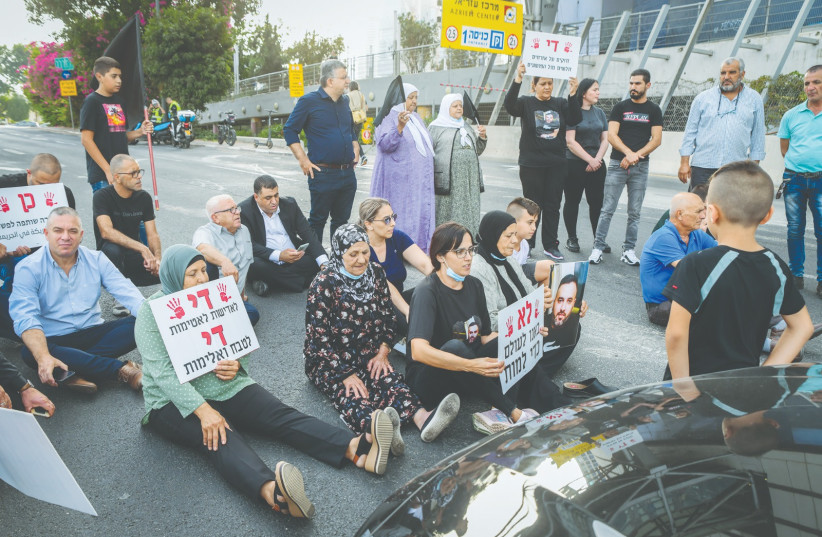There have been many violent incidents in Israel in recent years, but perhaps there have always been – only now, they are widely reported in the media. At the same time, life expectancy here is among the longest in the world.
So it’s rather surprising that how long people live is less predictable and life expectancy for young people can be as much as 14 years shorter in violent countries, compared to peaceful countries, according to a new study from an international team led by researchers at the University of Oxford in the UK.
Maybe Israeli society is less violent than we thought.
Oxford’s Leverhulme Centre for Demographic Science. It reveals a direct link between the uncertainty of living in a violent setting, even for those not directly involved in the violence, and a “double burden” of shorter and less predictable lives.
According to the research, violent deaths are responsible for a high proportion of the differences in lifetime uncertainty between violent and peaceful countries. But, the study says, “The impact of violence on mortality goes beyond cutting lives short. When lives are routinely lost to violence, those left behind face uncertainty as to who will be next.”

Violence makes the differences between lifetime uncertainty between violent and peaceful countries
Lead author Dr. José Manuel Aburto from Oxford's Leverhulme Centre for Demographic Science and the London School of Hygiene and Tropical Medicine, said: “What we found most striking is that lifetime uncertainty has a greater association with violence than life expectancy. Lifetime uncertainty, therefore, should not be overlooked when analysing changes in mortality patterns.” Study co-author Prof. Ridhi Kashyap, from the Leverhulme Center, added: “While men are the major direct victims of violence, women are more likely to experience non-fatal consequences in violent contexts. These indirect effects of violence should not be ignored as they fuel gender inequalities, and can trigger other forms of vulnerability and causes of death.”
They have just published their study in the journal Science Advances under the title “A global assessment of the impact of violence on lifetime uncertainty.”
Uncertainty around age at death or lifetime uncertainty is a key public health indicator and a marker of inequality in survival, they wrote. “How does the extent of violence affect lifetime uncertainty? We address this question by quantifying the impact of violence on dispersion in the ages at death, the metric most used to measure lifetime uncertainty. Using mortality data from the Global Burden of Disease Study and the Internal Peace Index between 2008 and 2017, we find that the most violent countries are also those with the highest lifetime uncertainty. In the {Arab] Middle East, conflict-related deaths are the largest contributor to lifetime uncertainty.”
In Latin America, a similar pattern is attributable to homicides. The effects are larger in magnitude for men, but the consequences remain considerable for women. “Our study points to a double burden of violence on longevity: Not only does violence shorten individual lives, but it also makes the length of life less predictable.”
Exposure to violence entails a fundamental state of vulnerability with important social and psychological implications. Among these is a high risk of premature death, causing higher lifetime uncertainty, the researchers continued. At the same time, higher levels of uncertainty make individuals more likely to engage in violent behavior, creating a vicious cycle that is difficult to break. Although substantial effort has been directed to studying the interplay of individuals’ perceptions of uncertainty and violence, an empirical link between prevailing levels of violence and lifetime uncertainty has not been comprehensively established worldwide.
Lifetime uncertainty was remarkably low between 2008 and 2017 in most Northern and Southern European countries. Although Europe has been the most peaceful region over the period, the Russian invasion of Ukraine will impact this, they said.
In high-income countries, reduced cancer mortality has recently helped to reduce lifetime uncertainty. But, in the most violent societies, lifetime uncertainty is even experienced by those not directly involved in violence. The report states that “poverty-insecurity-violence cycles magnify pre-existing structural patterns of disadvantage for women and fundamental imbalances in gender relations at young ages. In some Latin American countries, female homicides have increased over the last decades and exposure to violent environments brings health and social burdens, particularly for children and women.”
According to the report, lower life expectancy is usually associated with greater lifetime uncertainty. In addition, living in a violent society creates vulnerability and uncertainty – and that, in turn, can lead to more violent behavior.
Countries with high levels of violence experience lower levels of life expectancy than more peaceful ones. “We estimate a gap of around 14 years in remaining life expectancy at age 10 between the least and most violent countries. In El Salvador, Honduras, Guatemala and Colombia the gap in life expectancy with high income countries is predominantly explained by excess mortality due to homicides.”
“It is striking how violence alone is a major driver of disparities in lifetime uncertainty. One thing is for certain, global violence is a public health crisis, with tremendous implications for population health, and should not be taken lightly.”
Vanessa di Lego
Study co-author Vanessa di Lego from the Wittgenstein Center for Demography and Global Human Capital in Vienna, added: “It is striking how violence alone is a major driver of disparities in lifetime uncertainty. One thing is for certain, global violence is a public health crisis, with tremendous implications for population health, and should not be taken lightly.”
